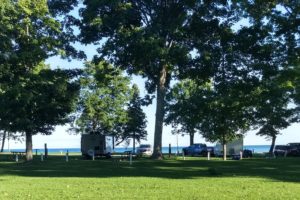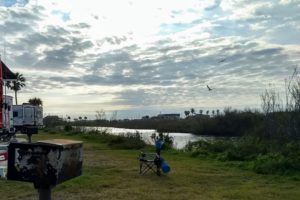The past couple of days have been Chamber of Commerce days—sunny, breezy, and inviting. We took off this morning to the Galveston Naval Museum at Seawolf Park. Interesting fact: 52 submarines were sunk in WWII. Each state was given the name of a submarine to honor in any way they wished; California and New York were give two names each because of their population. The submarine Seawolf was given to Texas, and this park honors the submarine and the men who died when it sank. Amazing heritage that the veterans in the area honor each year. Another interesting fact: both of these ships are about the same length. Submarine is 311′ long, and the destroyer escort is 306′ long.

As a kid, I loved watching WWII movies and was fascinated by the battles fought on land and sea. I had thought about enlisting after high school but knew that my parents wouldn’t go for it since they had their sights on college for me. The love of military has always stayed with me and was one reason I wanted to marry someone who had been an officer in one of the services. Getting to see these ships from my childhood memories is wonderful.
USS Cavalla submarine
The submarine housed here was commissioned in February 1944, and is called The Avenger of Pearl Harbor because it sank a Japanese carrier that attacked Pearl Harbor. We met Ron as we walked toward the submarine, and he took us through it. Ron spent 35 years on submarines in the Navy and has been retired since 1991—so knowledgeable!

Crew size was around 60 men: 6-8 officers and 54 enlisted men. I have no idea how they could all fit. It was often very hot inside and water was scarce for showers.
One question I had for him was how long it would take it to run through the sub from one end to the other when he had to. Answer: 30 seconds!
We didn’t take many pictures of this sub since it’s so similar to the sub we toured in Mobile (part 8 of gulf shores posts). But we do have some new information for you.
First, the outside of the submarine is much larger than the inside because of two hulls separated by air pockets and various tanks. This picture is a little awkward, but I’m looking up through the hatch where we’re standing. As you can see, the hatch to the outside is further up, showing the space between the inner and outside hulls.

When at sea, this torpedo room had 6 tubes (now only 4). Two tubes are below the ones we see. The other torpedoes were stored below the flooring and could be brought up or used on the lower tubes.

So why an oval door?

USS Stewart Destroyer Escort


The next pictures details the role that this escort played in the 1940s. Barney said these ships would be on the outer rim of convoys looking out for submarines. They were the first line of defense for the rest of the convoy.

Crew on this ship was around 209: 8 officers and 201 enlisted. All of the ammunition was carried to the top decks by the men, one reason they needed so many onboard.
This ship had two types of attack that we hadn’t seen before: K guns for depth charges and hedgehogs. First the K guns.



Barrels of depth charges were on rollers at the back of the ship to be dropped into the ocean, looking for enemy subs.
Hedgehogs

The bombs carried about 30 lbs of TNT and exploded when contacting a submarine. The hedgehog launched bombs about 250 yards forward and to the side of the ship, in an elliptical pattern. The firing sequence was aligned to ensure all bombs hit the water at the same time.
Unlike depth charges, no explosions or turbulence could be seen unless a bomb hit its target. Ships could maintain constant sonar contact with the sub and turn back to fire another round of hedgehogs if they missed the first time, resulting in a higher “kill” rate than depth charges during WWII.

another part of the ship—bunks and mess for enlisted men



As we were leaving, we saw this huge container ship in the channel bringing containers into the busy Galveston harbor. It really is a working harbor.





